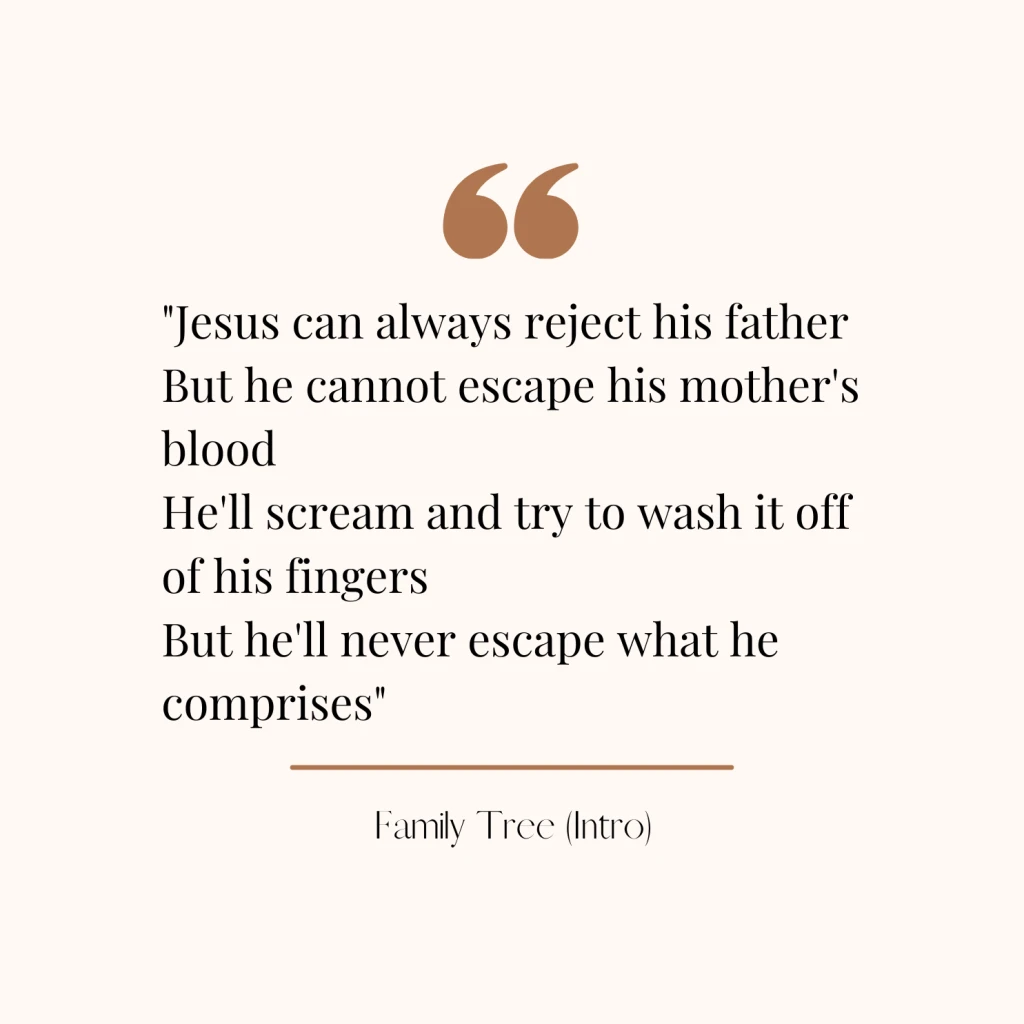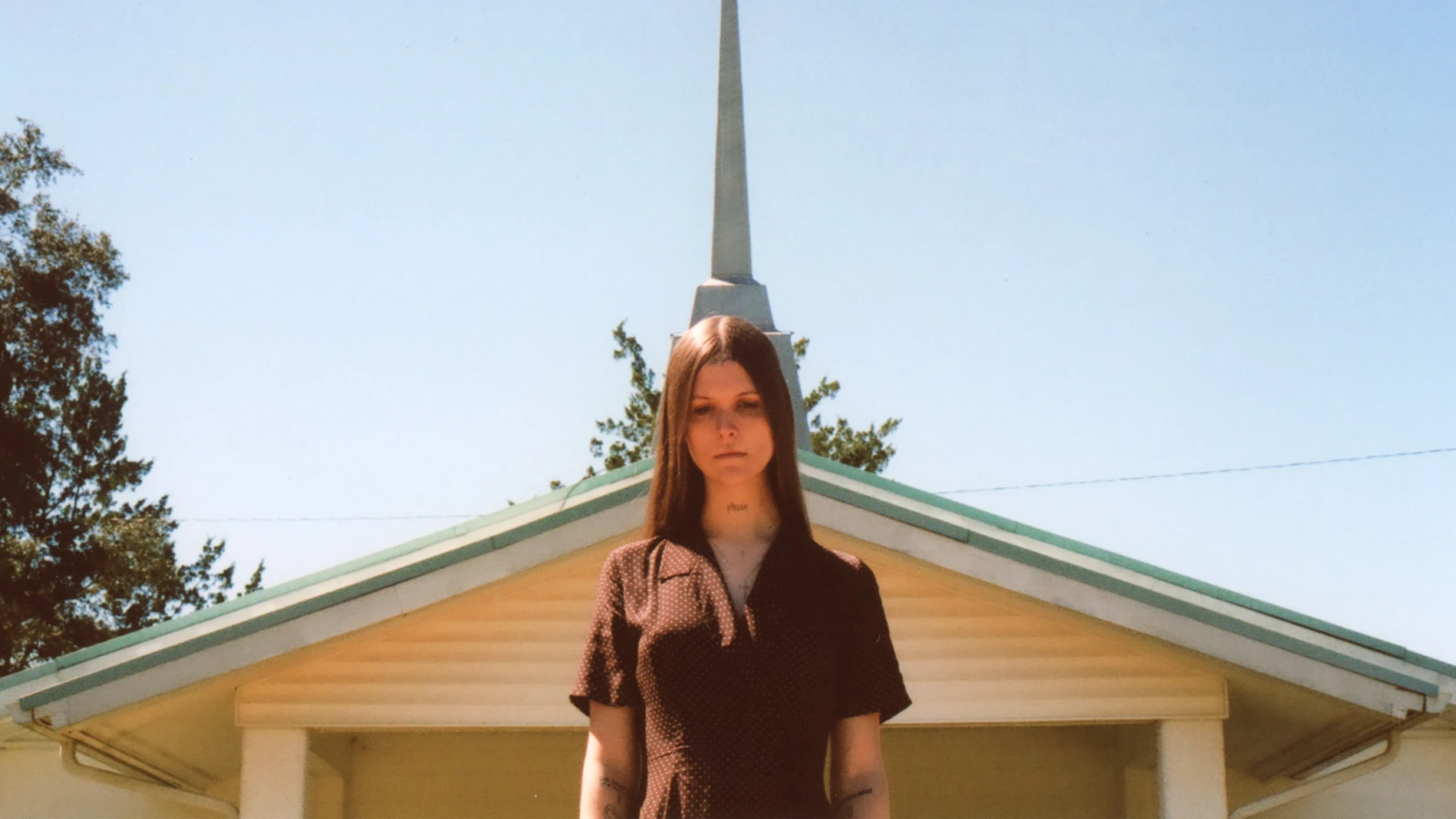27th July, 2024
At some stage toward the end of last year, I carelessly brushed past a very average TikTok, and it accidentally changed my life. I think it was literally some rando’s attempt at a thirst trap. It had about 6 likes, but it was on my For You Page, nonetheless. Why, you ask? Well, because my algorithm knew I needed to hear the following lines;

I lost my mind. Right away, I looked it up, located the song on Spotify, and played it 12 times per day during the following month. I brought it up in every conversation. I insisted that all of my loved ones hear it immediately. And I’d love to say I’ve moved on from this life-altering addiction, but I have not. I probably still listen to it at least once a day.
On Saturday night, I will go to church. By which I mean, I’m seeing Ethel Cain’s show at the Opera House. God knows I won’t shut up about it for weeks after the fact. But I’ve been meaning to info-dump all the fun facts I’ve collected through my Ethel Cain hyper-fixation throughout this year, and if not now, when? So bare with me while I lay down the lore. It might prevent me from being so intolerable about it all in person. No promises, though.
Background
After the Months-long Crush obsession, I eventually sat down to listen to Cain’s debut album, Preacher’s Daughter. I woke up one fine morning and didn’t even try to have a good day. I brought up the Genius Lyrics page and digested a world’s worth of information as I listened. It took me longer than I’m proud of realising that Ethel Cain is a character, and Preacher’s Daughter is a fictional concept album.
As compared with the rest of Cain’s discography, I was pleased and interested to find that Crush was not an entirely accurate representation of the deep-south bible-belt horror rock that Preacher’s Daughter in set in. As someone who’s extensively read into the works of Nick Cave, I can say with all certainty that this record is second to none as an in-depth and visceral exploration of trauma through Gospel-gothic rock.
The person behind the artist, Hayden Silas Anhedönia, is a trans musician from Florida. She grew up in the Baptist church, and her father is actually a deacon, but Ethel Cain as a character is separate and developed in her own right. She’s from a different time and place. It’s safe to say that Hayden has not suffered the same fate as Ethel.
One night in 2018, Hayden Silas Anhedönia found herself possessed by a woman named Ethel Cain. As the story goes—charted chronologically across the singer-songwriter’s debut album Preacher’s Daughter—Cain escapes the strictures of her religious upbringing only to fall into a doomed romance. The listener is then drawn into her downward spiral of kidnapping, drug addiction, prostitution, and eventually Cain’s murder and cannibalization at the hands of her lover (like any good pop album, then).
The Gospel According to Ethel Cain, Vogue
Preacher’s Daughter is the first record from a trilogy that tells the story of Ethel Cain’s family tree. This one focuses on Ethel herself, where the other records will focus on her mother and grandmother. It’s a multimedia project centred on exploring intergenerational trauma. You don’t have to explore the entire universe to enjoy her music on Spotify, but it does add an extra layer of context, and for me, made it even more interesting.
The Ethel Cain Cinematic Universe is a multimedia project by Ethel Cain. It is also called the “Ethel Cain universe” or simply “the lore.” The project consists of three albums, three books, and three movies that are about the lives of three women in the Cain family – the preacher’s daughter, the preacher’s wife, and the preacher’s mother – and how their lives connect through generational trauma, Southern Baptistism, and Southern Gothic tradition/culture.
https://daughtersofcain.fandom.com/wiki/Ethel_Cain_Cinematic_Universe
There are full data bases and fan wikis dedicated to collating the lore around Ethel Cain’s work. There are fictional news archives and interviews that document the stories told on this record. Ethel Cain’s hit song, American Teenager, made Barack Obama’s highly influential list of favourite songs from 2022. Barack Obama’s favourite list also brought me Phoebe Bridgers’ only upbeat song, Kyoto, back in 2020. So it’s safe to say Obama has a talent for choosing the happiest song on otherwise soul-crushing records.

Preacher’s Daughter – A Summary
I’m going to give you the track-by-track run down, but that’s no excuse not to go listen to the album and read the annotations on your own. Don’t be lazy. I promise it’s cool.

Preacher’s Daughter is set in 1991, in a small town in Alabama, 10 years after the death of Ethel’s Father, Rev. Joseph Cain. The circumstances of his death are so far left ambiguous, aside from the detail that he died in a fire.
The first few songs on the album centre around Ethel’s family and religious identities. Songs like Family Tree and Hard Times explore a juxtaposition of her father as a good, respected, community leader and beloved moral compass, and, behind closed doors, an angry, corrupt and abusive father.
The album strikes a complicated balance between good and evil – as any good christian horror does. There are sweet nostalgic songs like A House In Nebraska and American Teenager, which reflect affectionately on Ethel’s experiences growing up in a small simple town. Then, there are tracks such as Western Nights and Gibson Girl, which explain Ethel’s complicated and abusive relationships as a 20-year-old, and the continued harm she faces at the hands of the men she loves. Tracks such as Hard Times and Family Tree also make links between her adult relationships and the abuse she faced as a child.
Finally, the last few tracks on the record detail Ethel’s kidnapping, murder, ascension, and cannibalisation, continually tying back to her family & religious identities, exploring morality, contradiction, and abuse in a very nuanced and detailed manner.
Through experimental and highly referential lyrics and production, every single track on this record speaks volumes upon volumes about an insanely wide array of issues and concepts. As much as I want to, it’s not even possible for me to communicate all of my thoughts and feelings about this album, and about Ethel Cain as a broader project, in the context of art, reality, and my own life. So, for now, I will leave you with this Canva slider of what, in my opinion, are the best and most thought-provoking lyrics from each track on Preacher’s Daughter.











Final Thoughts
In a few weeks, I will likely be back to hash out any more thoughts brought on by seeing Ethel Cain’s Vivid performance, but I suspect I’ll continue to analyse, research, re-contextualise and refer to this album for the rest of my life. For me, it really is one of those pieces of media that influences your line of thinking and enters your sphere of reference permanently, so I can’t say enough about it. If you made it to the end of this post, thanks for hanging in there. If not, fair enough! I just needed to unload a mind’s worth of info about it I’ve been mentally hoarding for months, and what else is this blog for? See you next time.

Series: Ethel Cain
- Part 2: Ethel Cain, You Owe Me a Kidney Now!
- Ethel Cain could write The Bible, but God couldn’t write Preacher’s Daughter!





